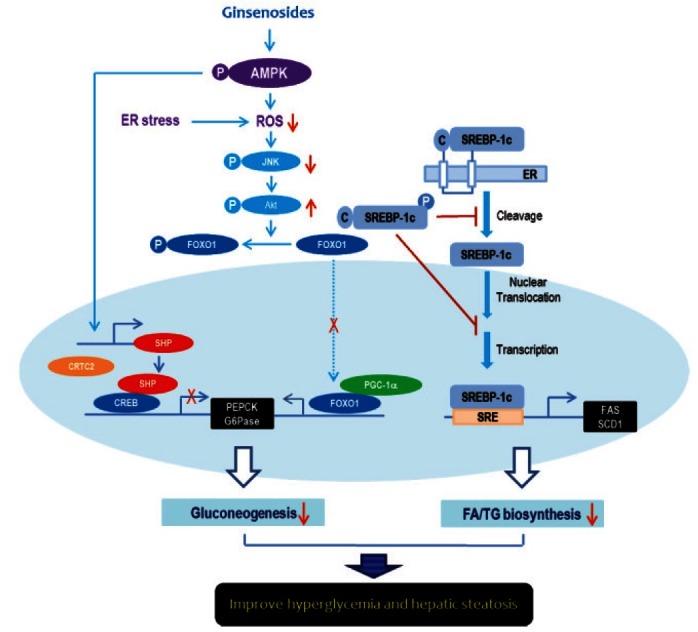Fig. 2. Proposed model for ginsenosides to suppress hepatic gluconeogenesis and steatosis through induction of small heterodimer partner (SHP) gene expression, reduction of reactive oxygen species (ROS) production, or phosphorylation of sterol regulatory element-binding protein (SREBP)-1c via AMP-activated protein kinase (AMPK) signaling pathway. Lee et al. [95] demonstrated that SHP decreases cAMP response element binding (CREB)-dependent induction of gluconeogenic gene expression and hepatic glucose production via disruption of CREB·CREB-regulated transcription co-activator 2 (CRTC2) complex due to direct interaction with CREB. AMPK is also known to suppress mitochondrial ROS production by oxidative stress via inducing antioxidant enzymes such as manganese superoxide dismutase, which leads to inactivation of c-Jun NH2-Terminal kinase (JNK), activation of Akt and consequently inhibition of hepatic glucose production. Recently, Li et al. [97] also demonstrated that AMPK interacts with and directly phosphorylates SREBP, which is necessary for inhibition of proteolytic processing and transcriptional activity of SREBP-1c in response to ginsenosides. ER, endoplasmic reticulum; FAS, fatty acid synthase; PEPCK, phosphoenolpyruvate carboxykinase; PGC-1α, peroxisome proliferator-activated receptor-γ coactivator-1 α; FAS, fatty acid synthase; SCD1, stearoyl-CoA desaturase-1; FA, fatty acid; TG, triglyceride.

